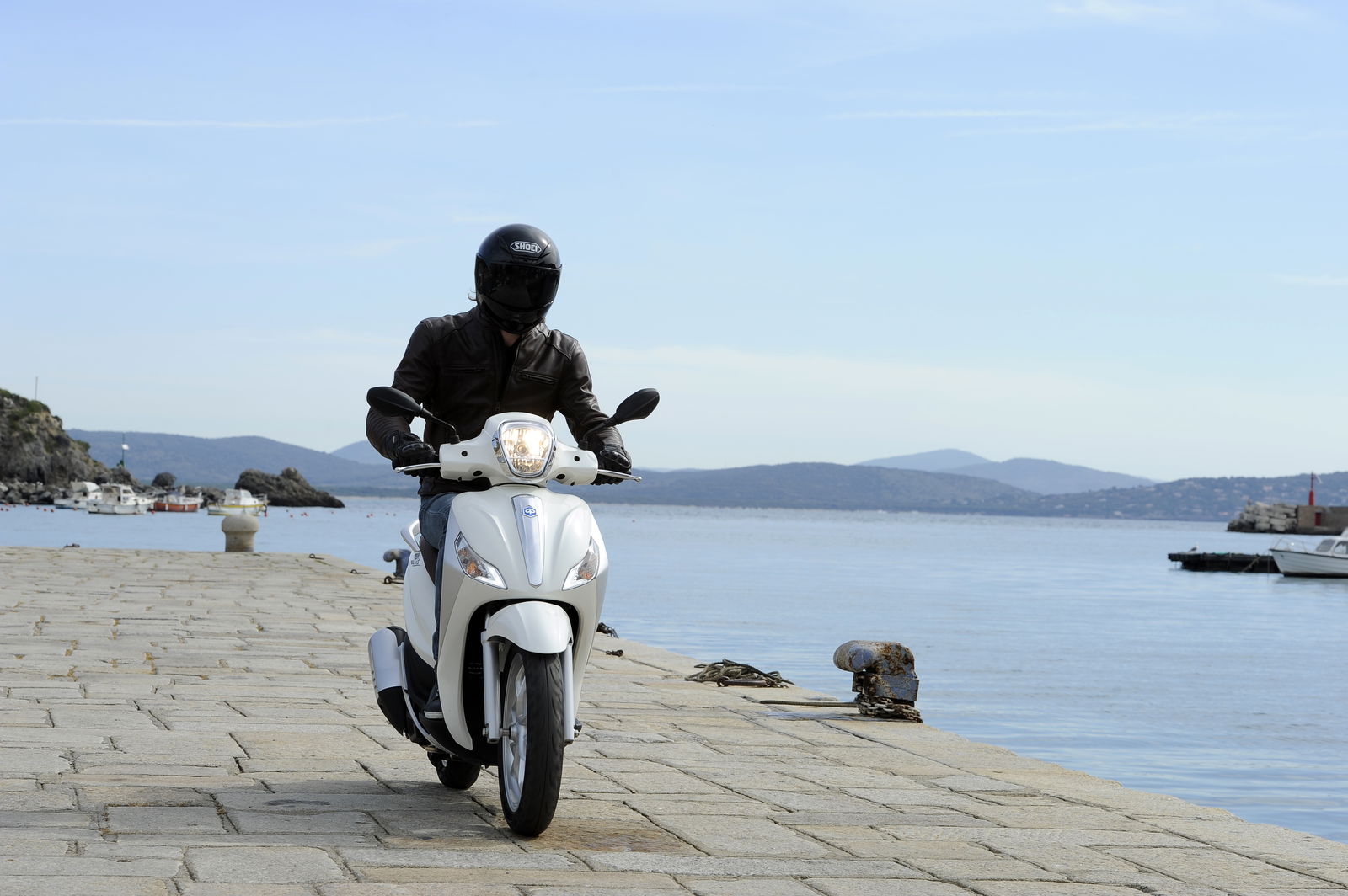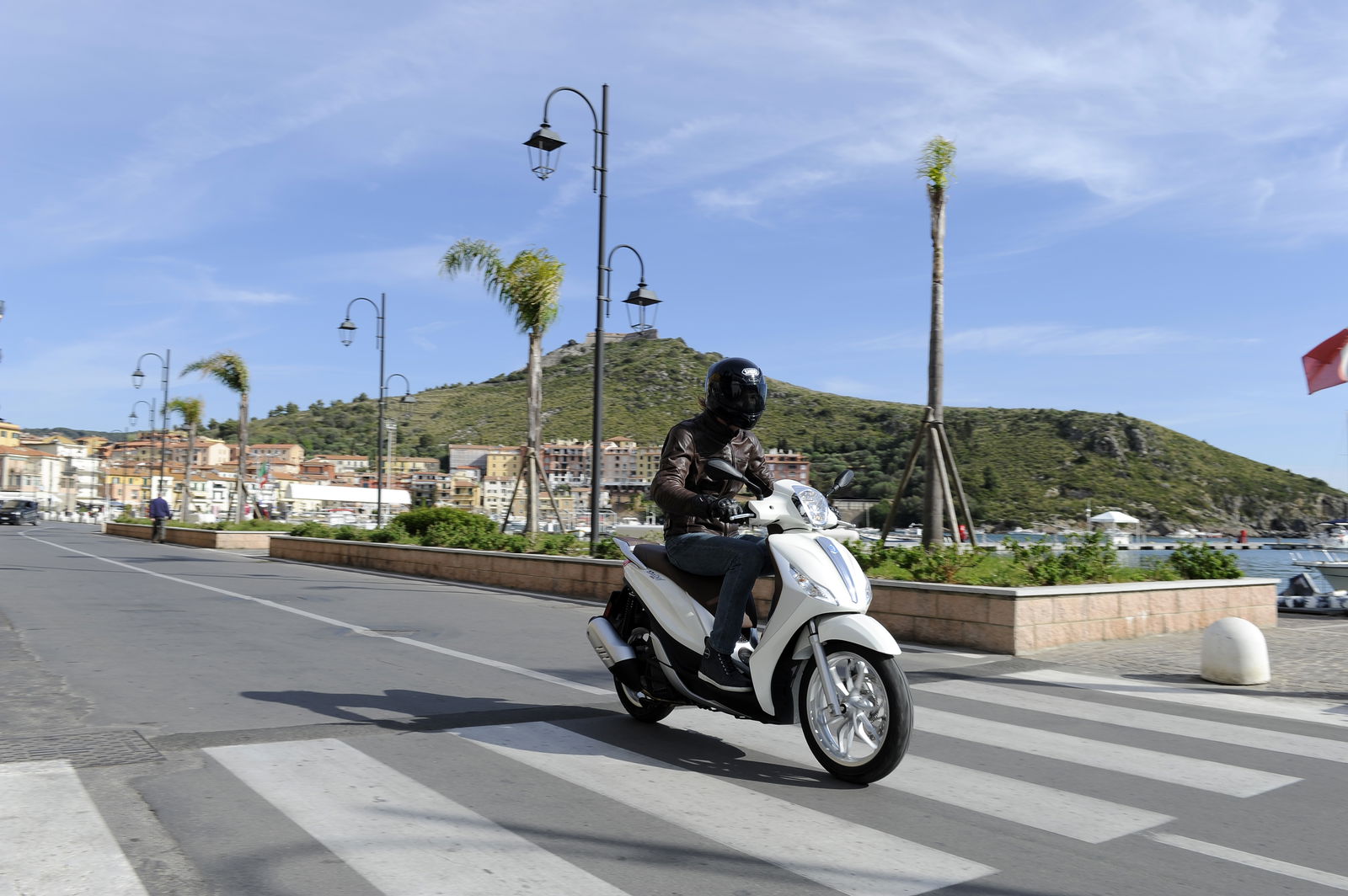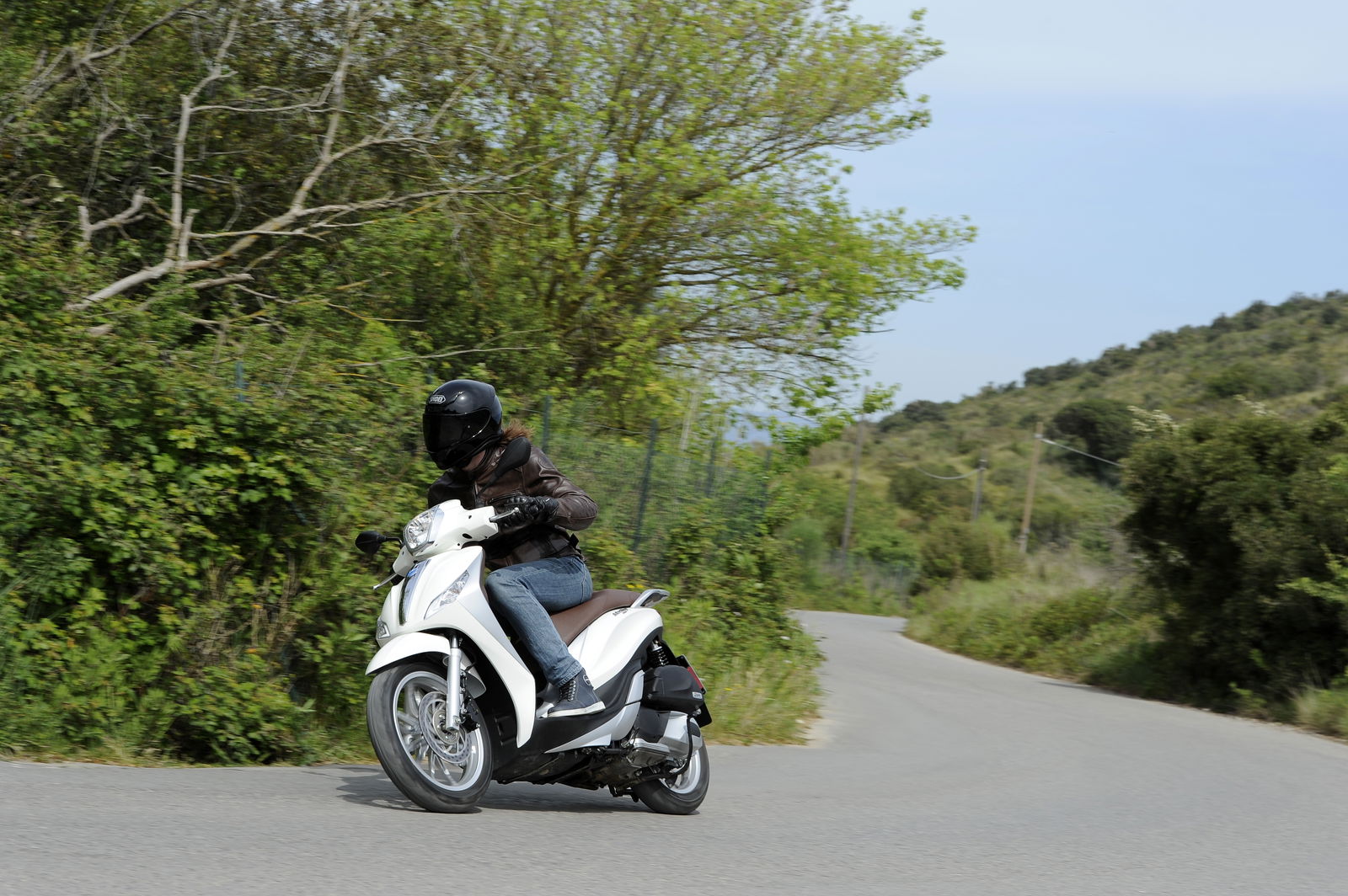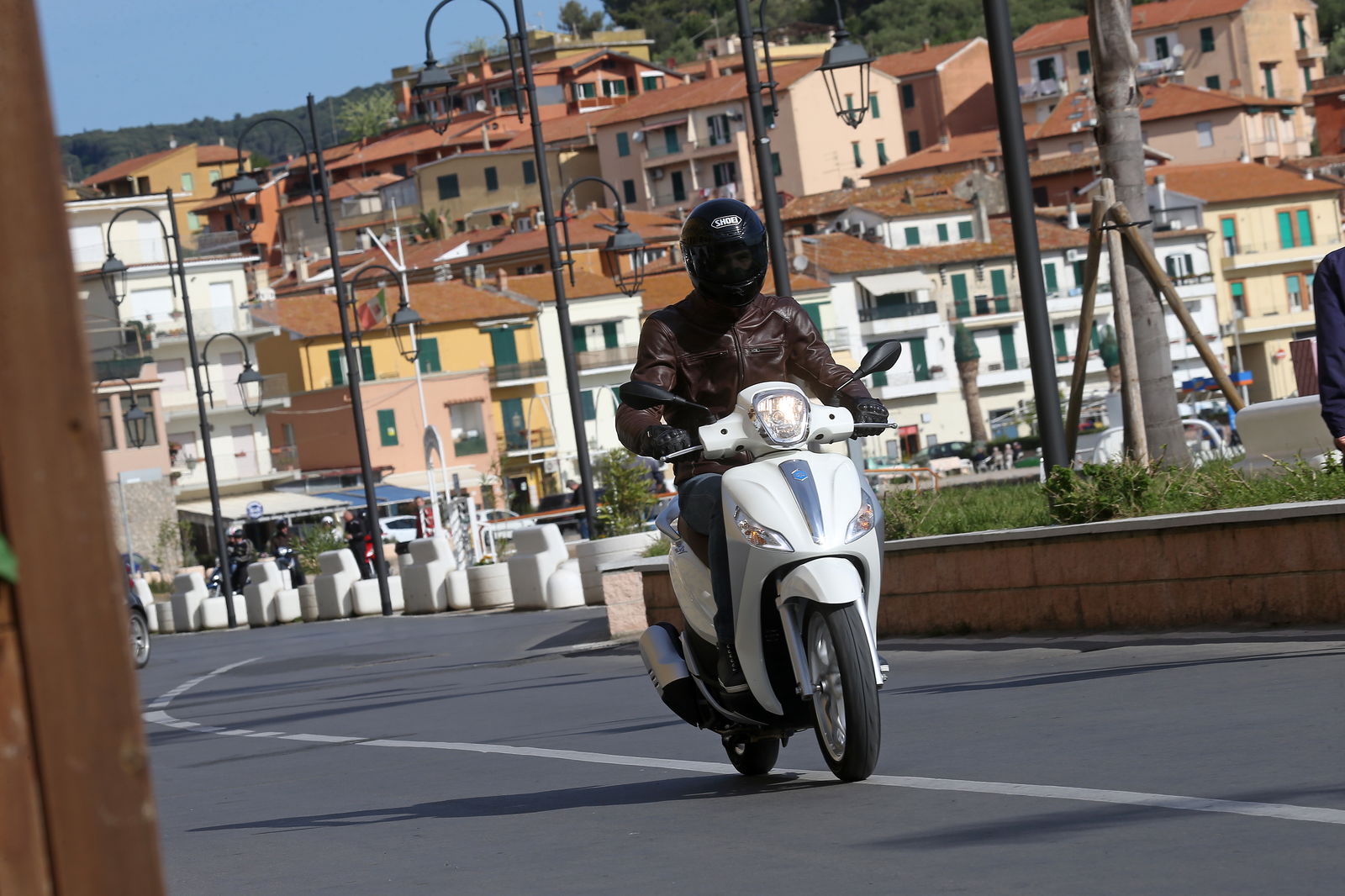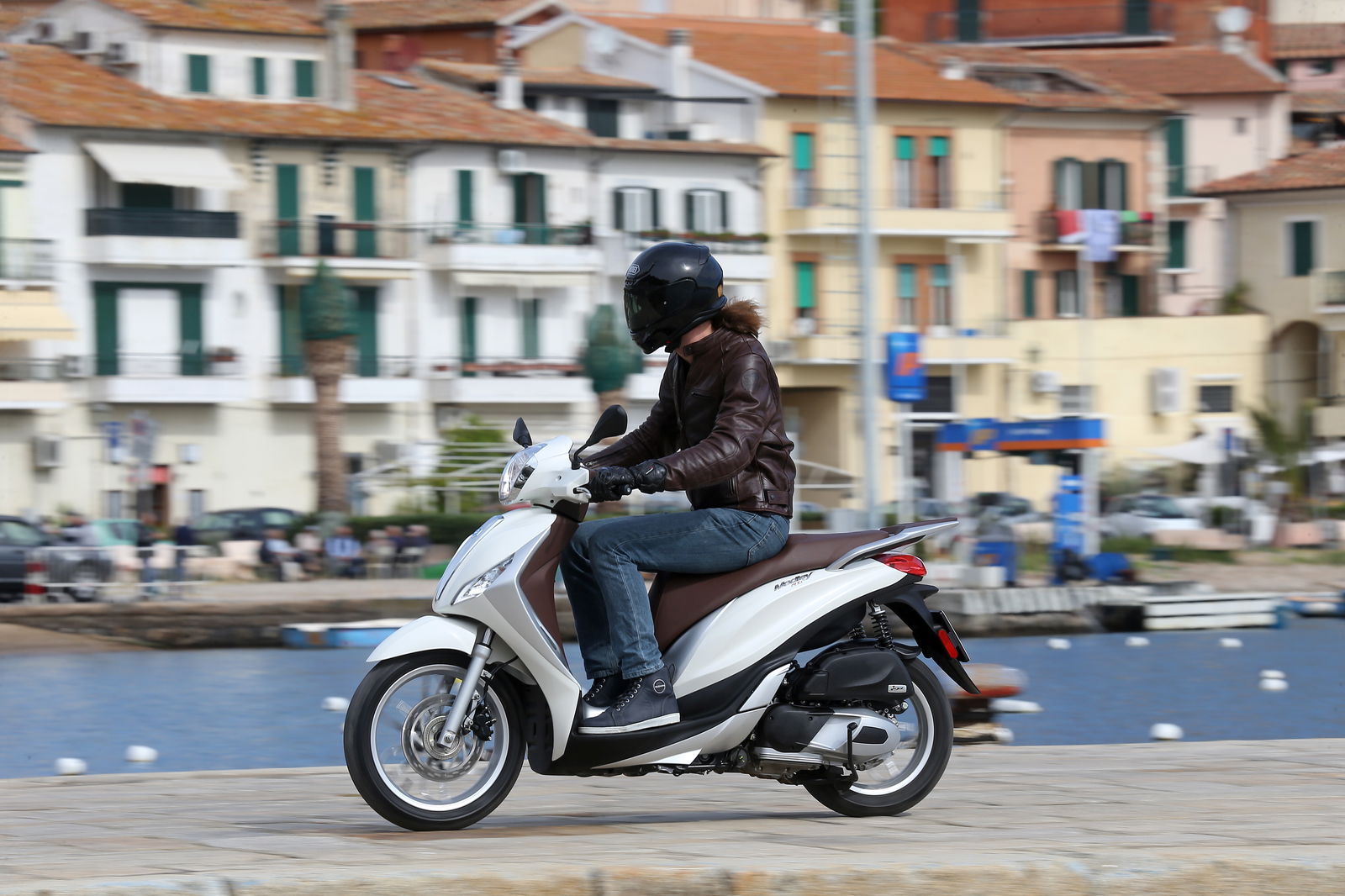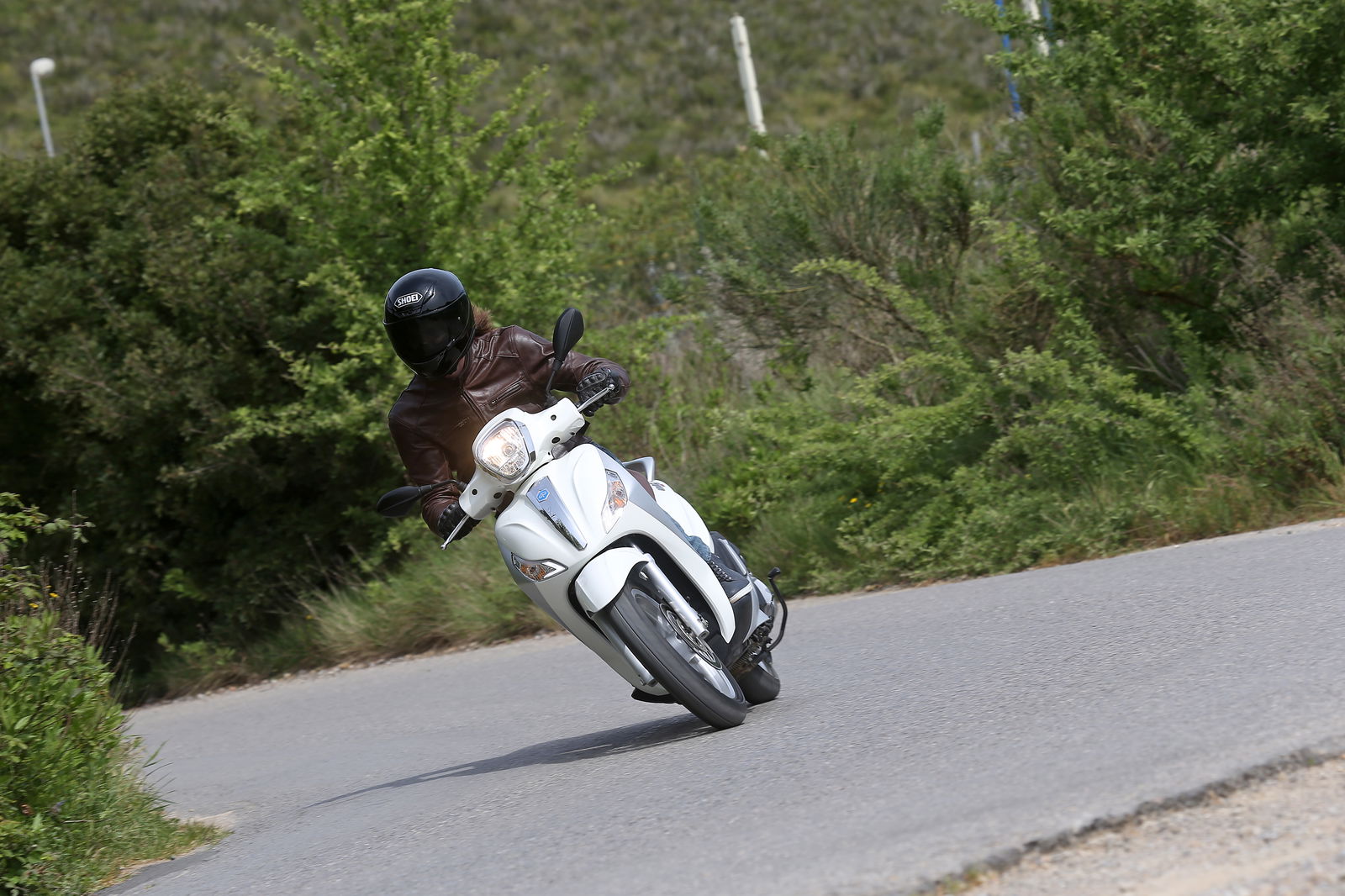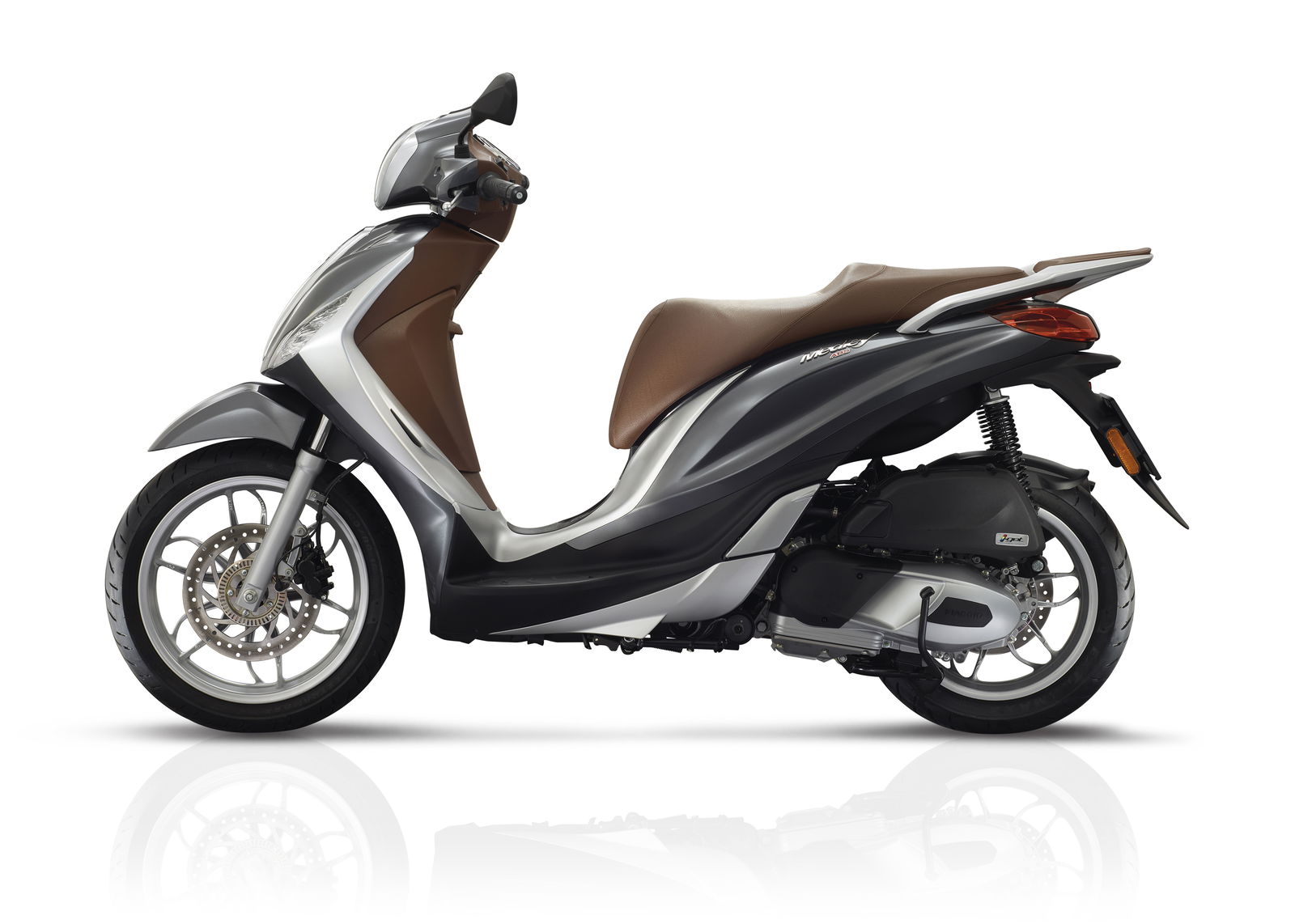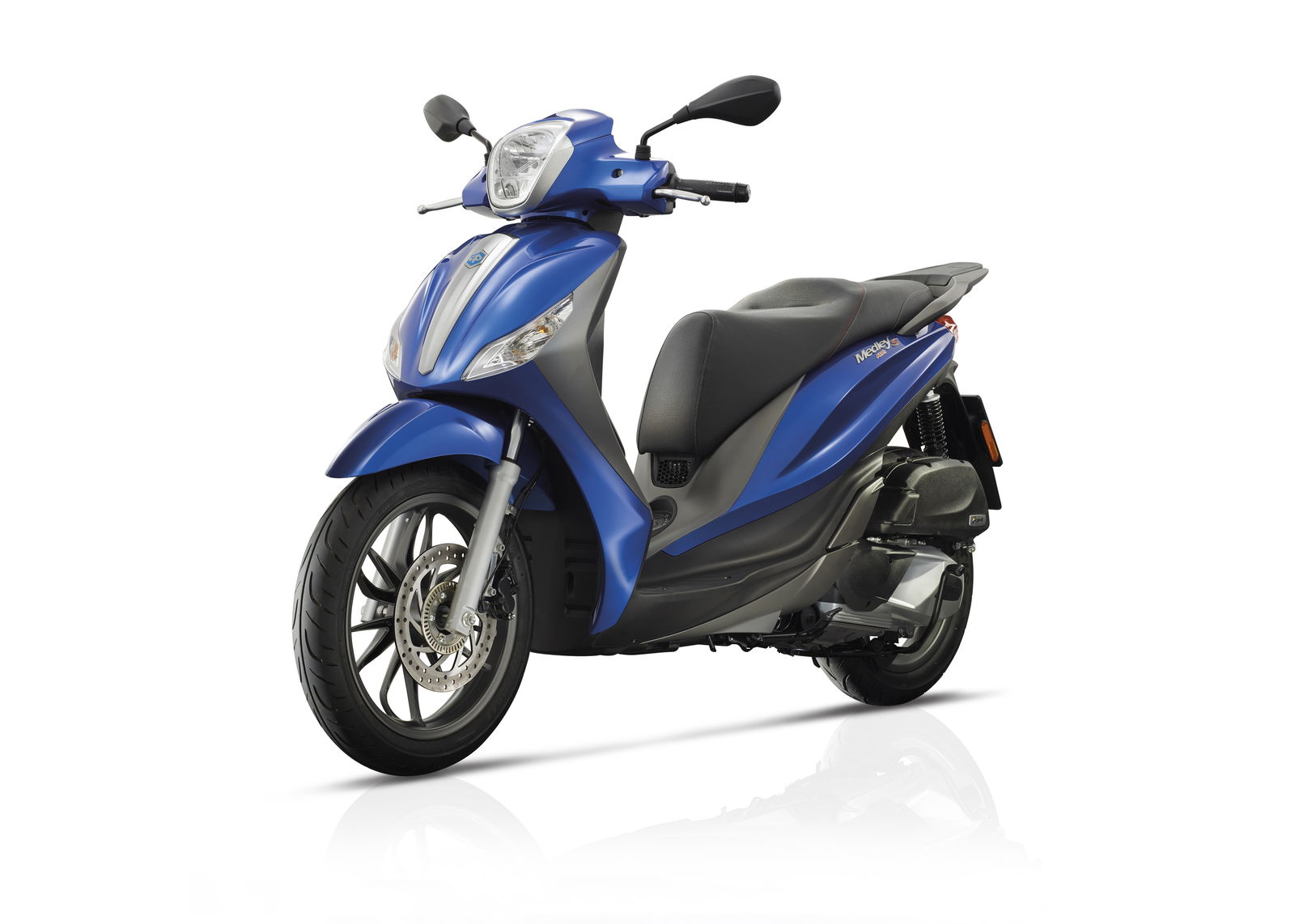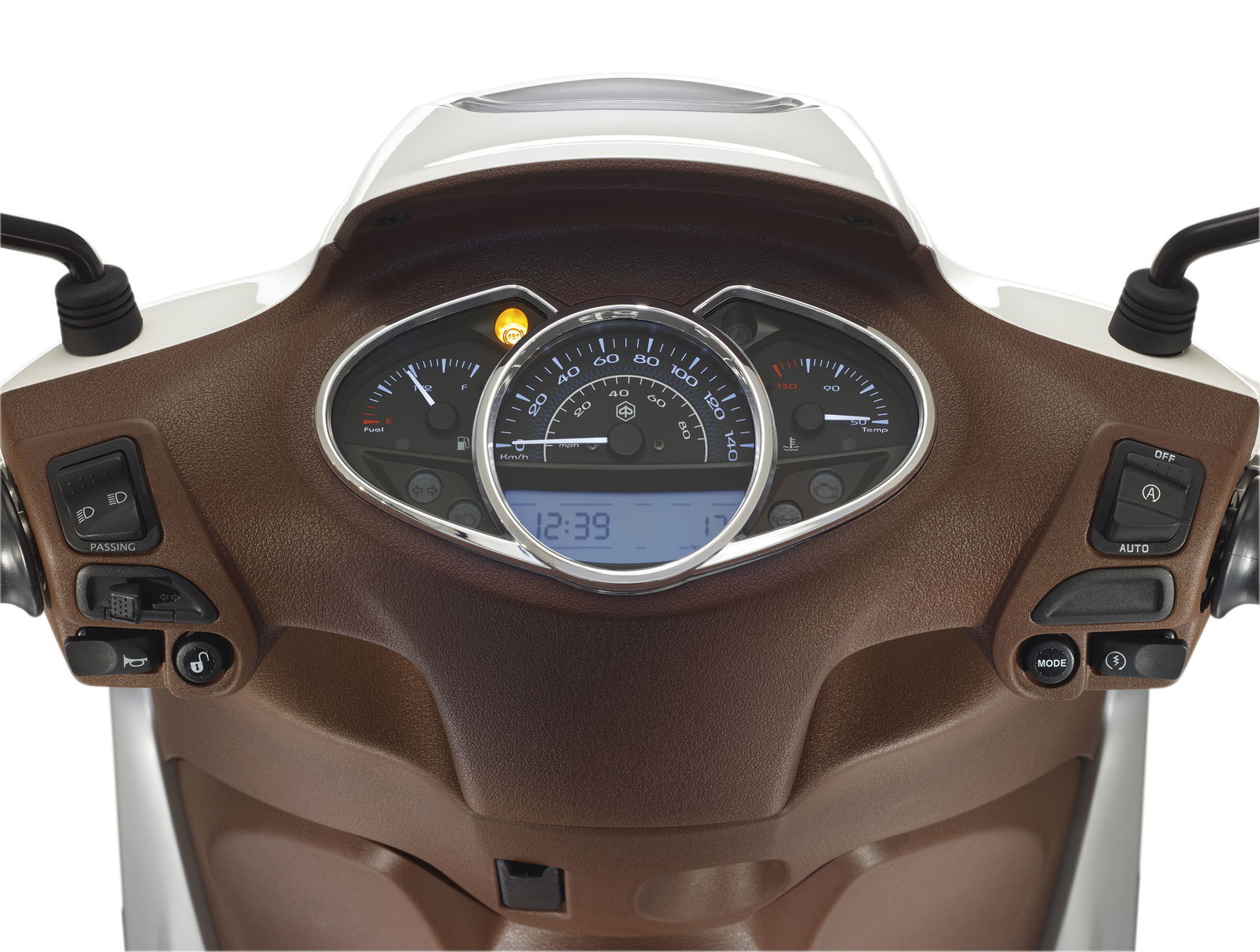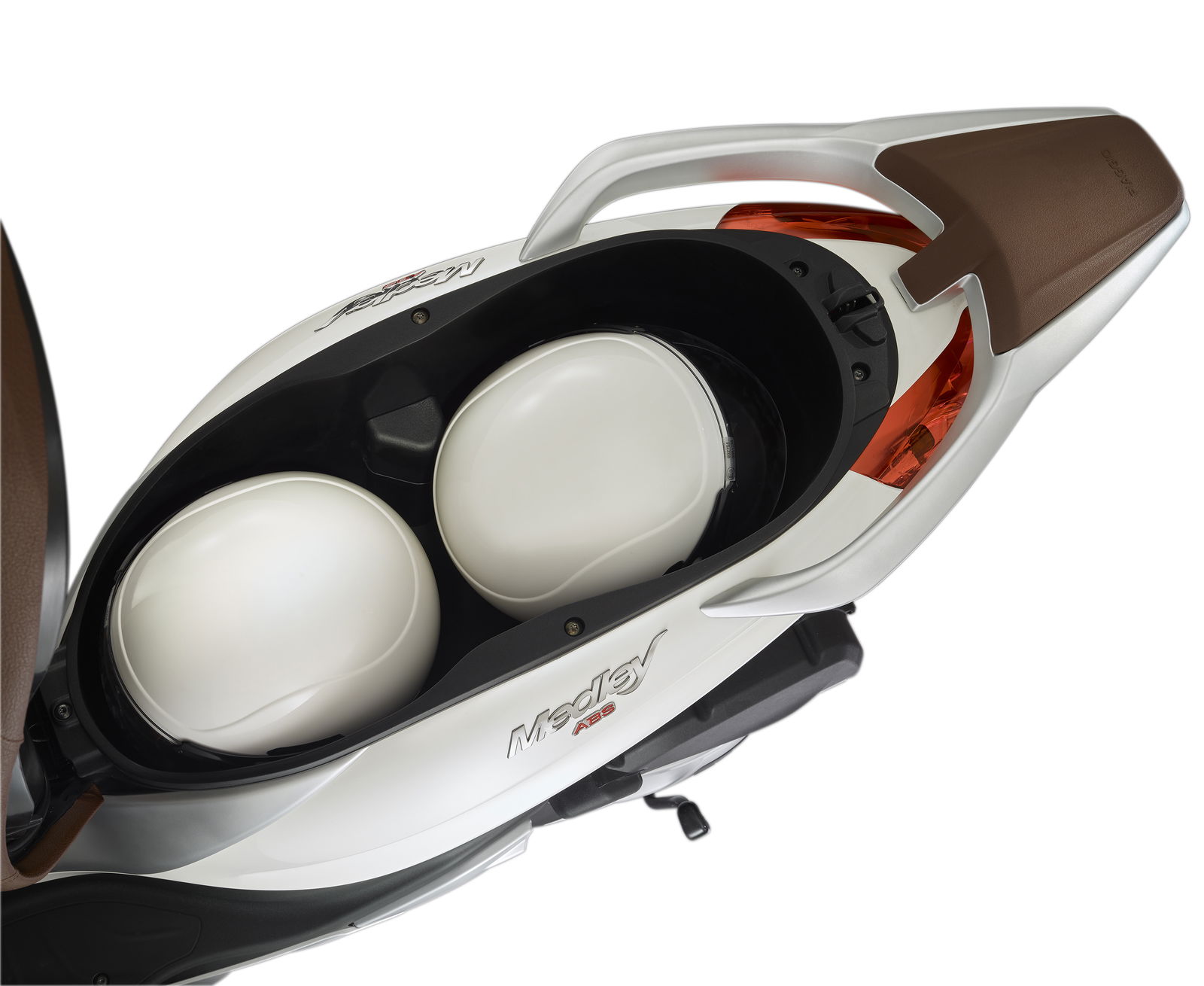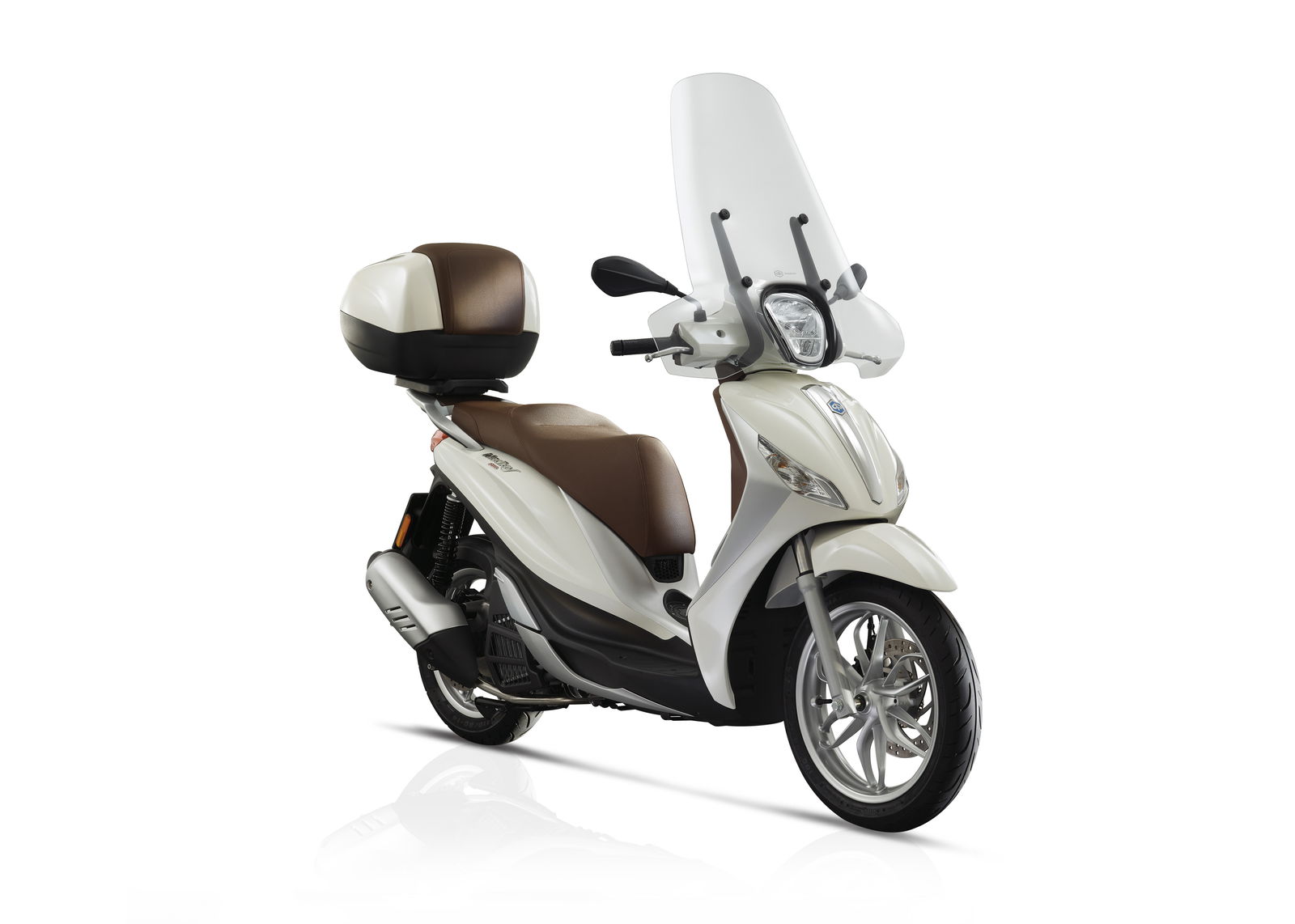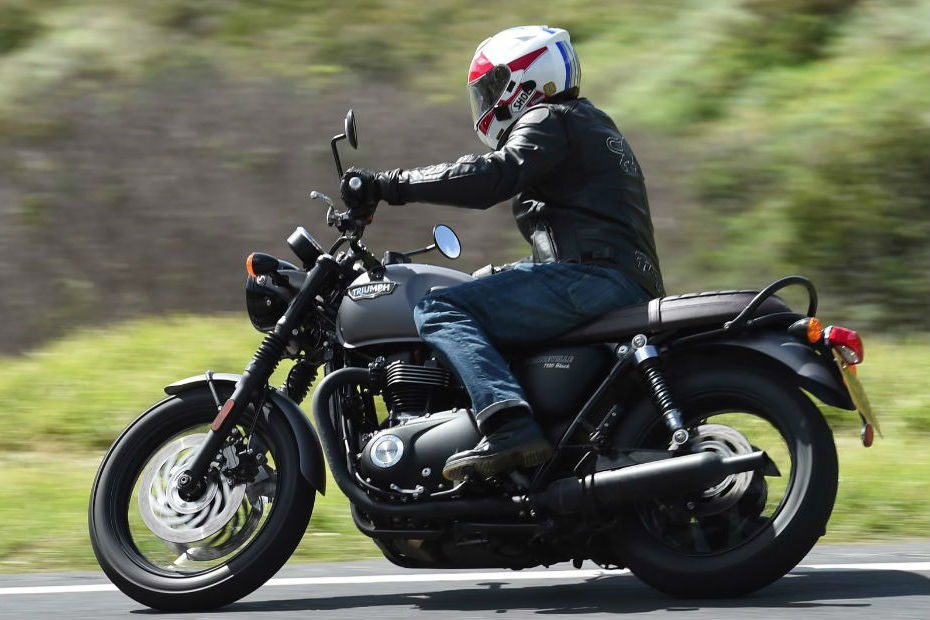First ride: Piaggio Medley 125 review
Tom Rayner rides Piaggio's latest large-wheel utility scooter

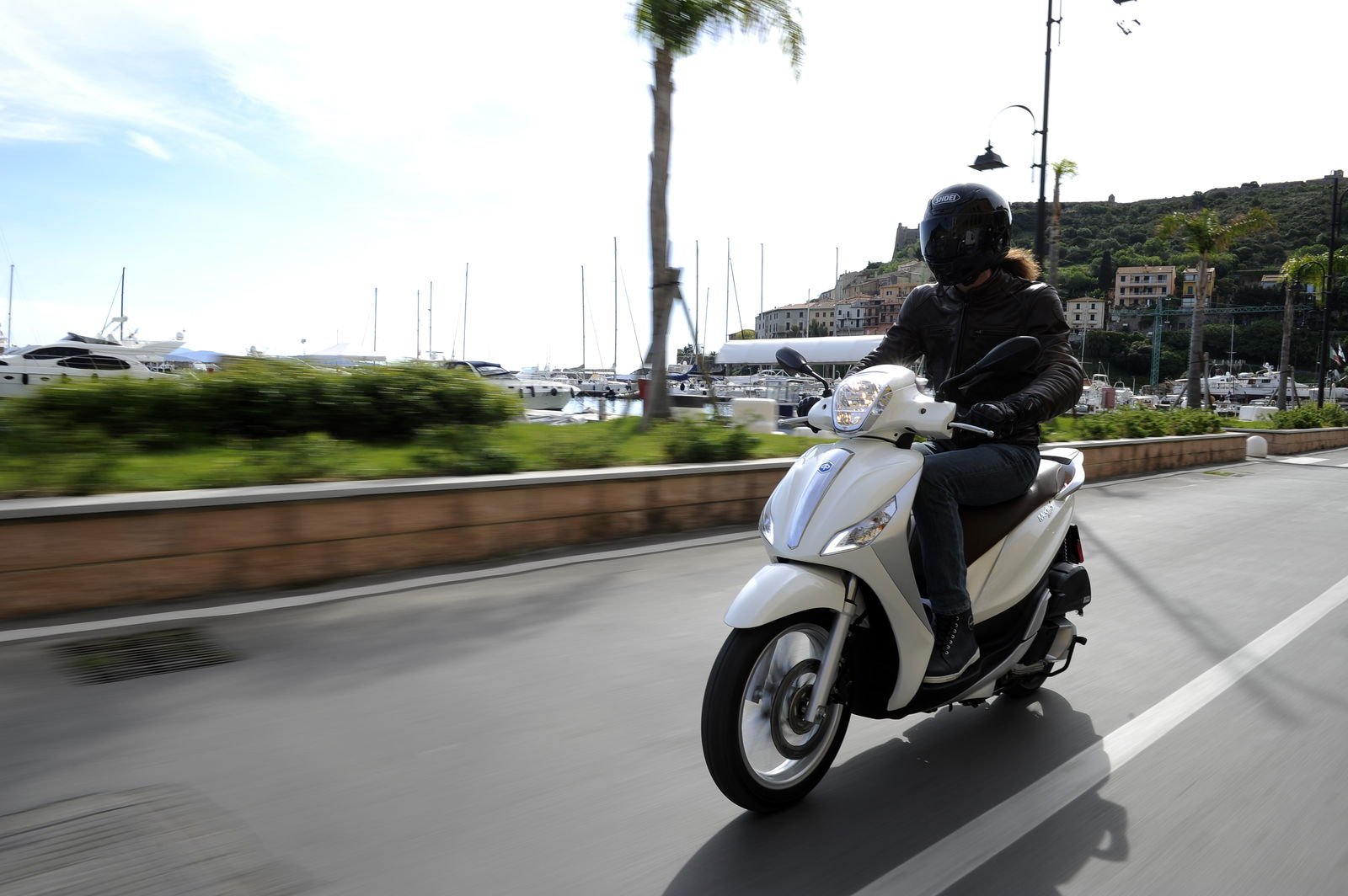
THE Medley is Piaggio's all-new Vietnamese-built utility scooter, packed with technology and priced to kill its competition.
It sits somewhere between the Liberty and the Beverly in Piaggio's range (hence the name Medley). It plugs an important hole that had been missing from the line-up, an omission Honda's SH125i was exploiting in the showrooms.
At the launch in Tuscany, a spokesman insisted Piaggio hadn't set out to build an SH125i killer, and instead the focus was all in-house. But then he insisted again, and later again, until the weight of his own protestations made me suspect Piaggio had set out to build a Honda killer... and from where I'm sitting, it looks like mission accomplished.
The vital statistics that matter in the world of utility scooters aren't torque or horsepower. Instead they are on-the-road price, service-intervals and fuel economy.
Thanks to a combination of Vietnamese production and Piaggio UK's ultra-competitive pricing strategy, the £2,671 Medley 125 comfortably undercuts the £3,199 Honda SH125i.
There's not much between the two in terms of economy but crucially the Piaggio pips its rival to the post with a claimed 135mpg (compared to a claimed 133mpg). Granted, it's going to be a penny-pinching owner who lets this measly difference sway their purchase but of course they'd already be £500 up on the deal if they had plumped for the Piaggio.
Service intervals for the new 125cc four-valve engine have been increased to 10,000km (6,250 miles). A typical annual service is likely to set you back around £75 with belt changes every 20,000km adding an extra £75 to the bill. The Medley is the first Euro4 scooter in its segment, so we can expect the engine to be with us for some time to come.
So on paper the Medley stacks up very nicely, but theory is nothing without practice.
Crack open the twist grip – no matter how viciously – and acceleration is smooth and unhurried, to the point of languid. Piaggio says this is an important characteristic for Asian markets, where riders regularly find themselves mid-pack at the traffic lights surrounded by 100 other scooters, 250 riders and passengers and 75 unlucky pigs. An explosive start when the lights change isn't ideal, unless porky pile-ups are your thing.
Doubtless the south east Asian market is much more important to Piaggio than the UK scooter scene, but when the lights go green in London I want to be a speck on the horizon and not keeping pace with Boris Johnson as he lumbers his bulk from the lights.
The Medley's great party trick is its 'start stop' technology (I can only assume 'stop start' had already been taken). Once the engine is up to temperature, it automatically cuts out a few seconds after stopping. I'm suspicious of witchcraft in all its forms, but this really works. I tried catching the sleeping scooter off-guard but the response is instant; open the throttle and it wakes, fires and accelerates without any lag.
The 16-inch front wheel rides over potholes that would unseat a Vespa rider and it tackles speed bumps, cobbles and other menaces on the urban obstacle course with aplomb.
The two-channel ABS, from Bosch, is particularly good and the feedback through the brake levers is reassuring and firm. Some of the mountain roads were gravel strewn and approaching these tight corners without ABS could have been worrying, particularly on downhill sections. I pushed hard with confidence and the ride was rewarding, even with a 12hp motor.
The liquid-cooled engine gets to 60mph progressively but it takes some patience to squeeze out the top speed of around 65mph. Personally, I'd have liked just a little more at the top for navigating lorries on dual-carriageways. If your commute includes faster roads then I'd consider leveling up to a 200cc machine. There are no plans to bring the Medley 150 to the UK, although the 25cc increase equals a 20% power hike and might just be the solution.
Practically speaking, the Medley is up there with the best. The under-seat storage accepted two full-face helmets without protest. The two lids I tested were identical Shoei NXRs. They're sports helmets with venting and (fortunately) it didn't crack the plastics when I clunked shut the saddle.
The Medley gets a USB charging point in the glove-box, a relief for smartphone neurotics. The accessories brochure is already bulging from windscreens (from £83), top boxes (from £95), antisocial sound systems (£322.49), and even a bike finder (£32.49) to help you locate your scooter when you're too rock-and-roll to remember where you parked it.
Style-wise the Medley succeeds rather than excels. The petal-shaped double spoke wheels are attractive and the bodywork and saddle are executive and neat, albeit slightly soulless. But let's not forget this is a utility scooter – it is the washing machine of the two-wheeled world and nobody buys a Whirlpool because of its artfully-sculpted, flowing lines.
The Medley 125 will go head-to-head with Honda's SH125i and has every reason to conquer. And if it steals sales from Honda, it will certainly steal even more sales from Piaggio's own Liberty 125. The Liberty is £300 cheaper but is a much less sophisticated machine with its three-valve, air-cooled engine. In Europe the price difference between the two models is much greater – but on this occasion the UK gets a biking bargain.
There's going to be a list the length of my arm of Chinese scooters that make the Medley look very expensive, until you come to consider resale value. You might argue the Medley is also an east Asian made scooter, but the quality seems exceptionally high.
If you live in the city and want a reliable, well-finished scooter then the Medley should be topping your list for test rides.
Model tested: Piaggio Medley 125
Price: £2,671 (S version £2,771)
Engine: 125cc four-valve single
Power: 12hp @ 8,500rpm
Torque: 8.5 lbft @ 6,500rpm
Suspension: Front – Telescopic hydraulic fork. Rear – Hydraulic dual-action shock absorber, five-step spring pre-load adjustment
Brakes: Front - 260mm disc served by 25.4mm dual-piston floating calliper. Rear – 240mm disc served by 22mm dual-piston floating calliper
Tyres: Tubeless 100/80-16 front, Tubeless 110/80-14 rear
Fuel capacity: 7 litres
Seat height: 787mm
Colours: White, blue and grey (S version in sporty blue)
Availability: In dealers now
